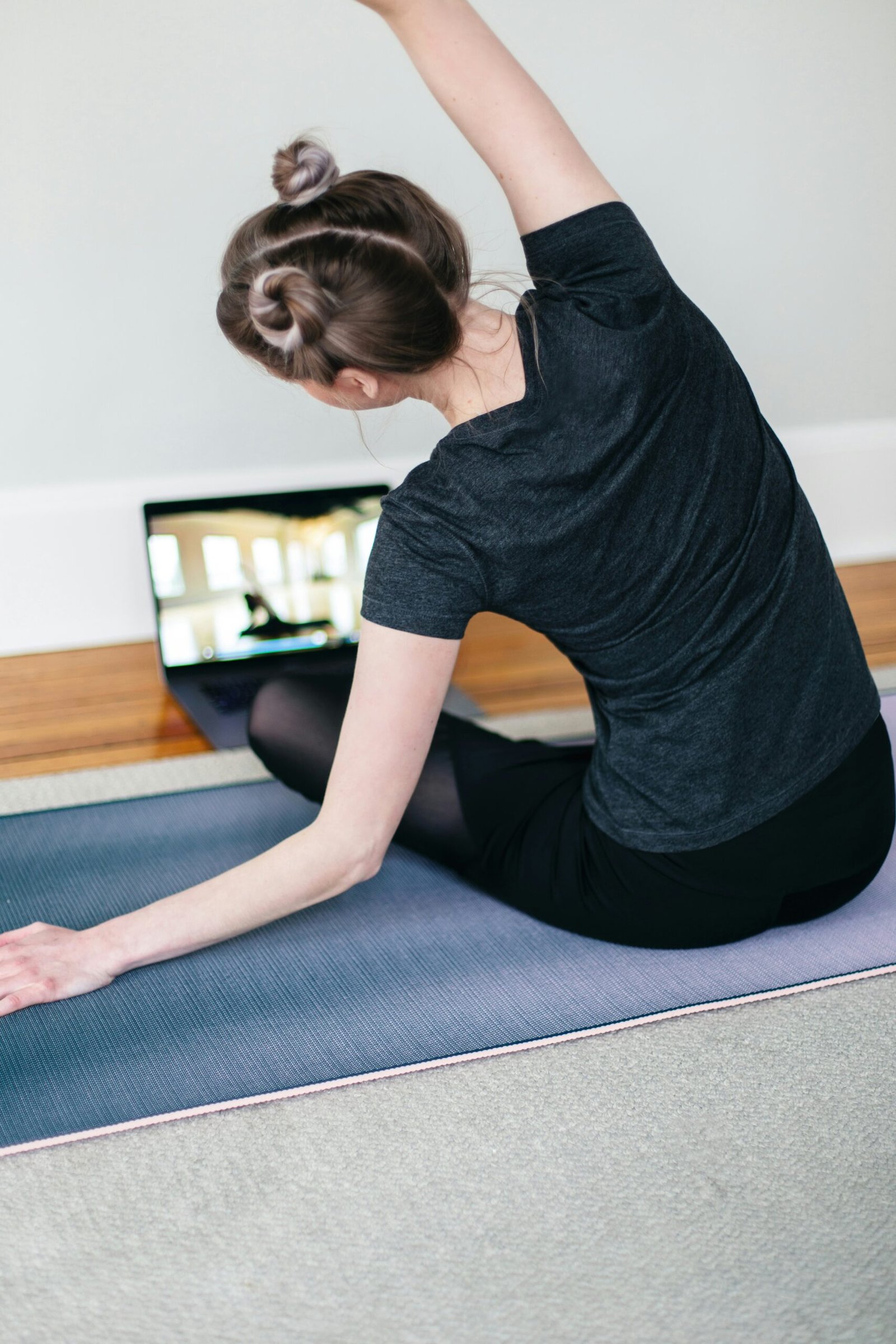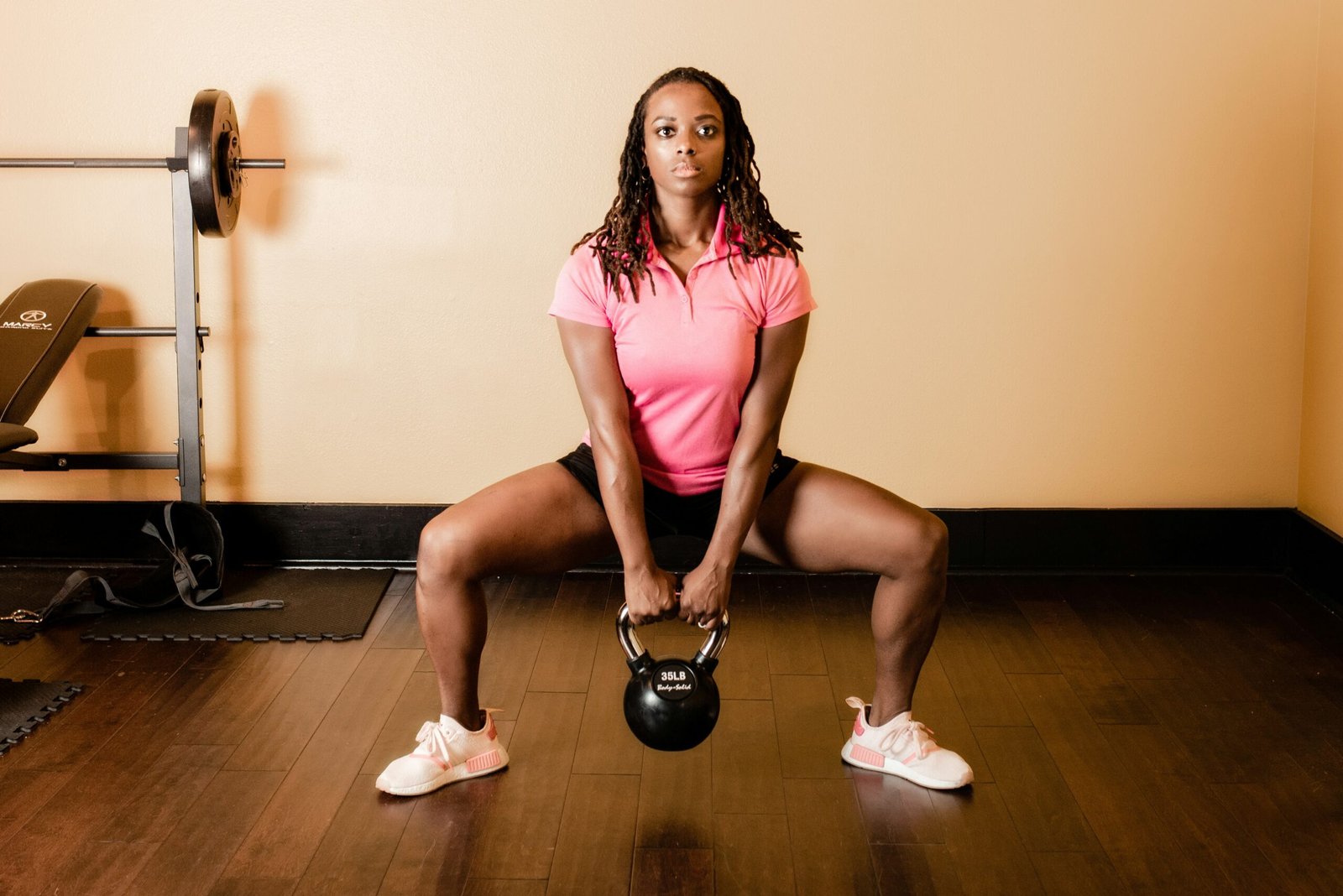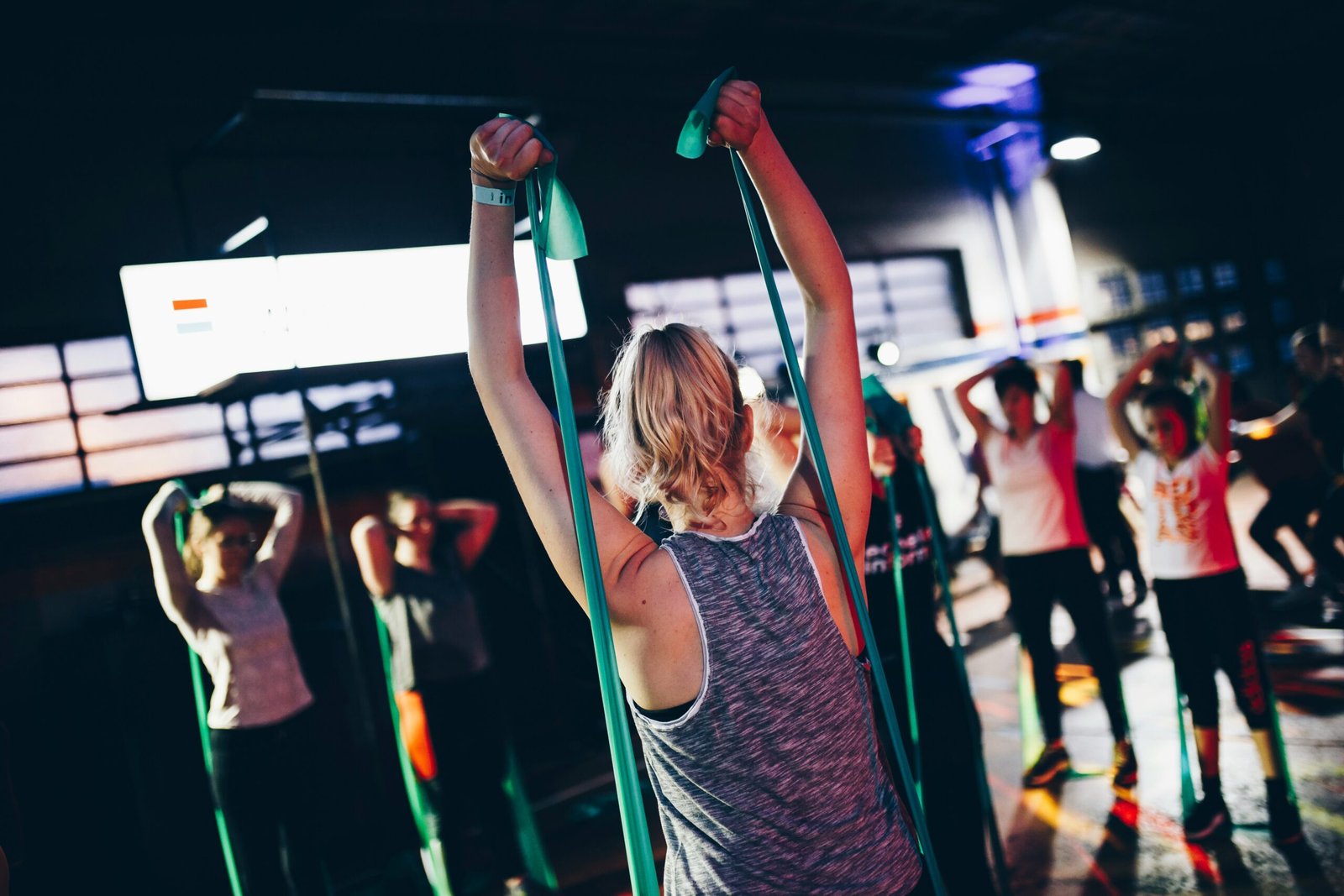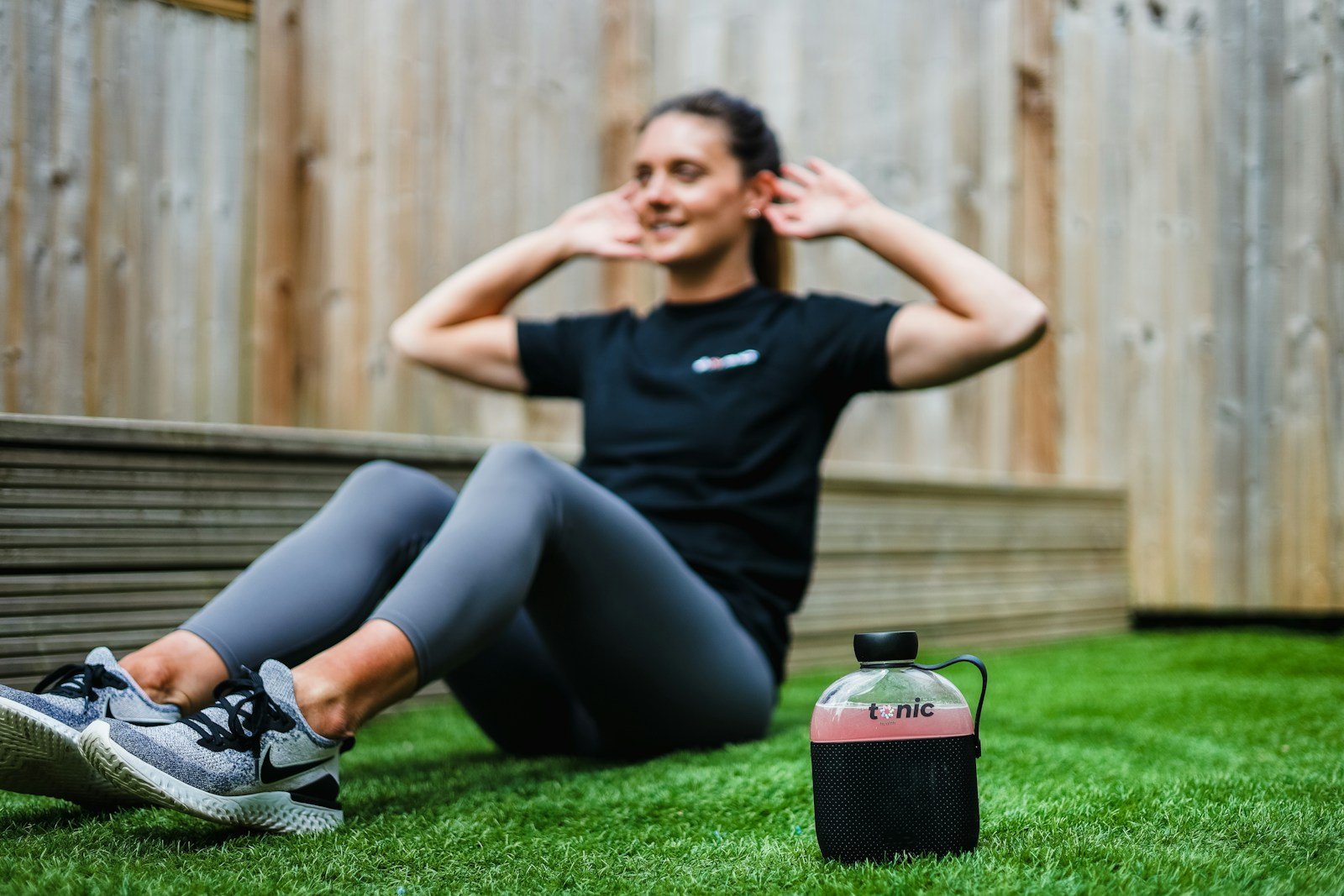Introduction: The Problem of Flabby Arms
Flabby arms are a common concern for many individuals, regardless of their overall fitness level. The accumulation of excess fat and a lack of muscle tone in the upper arms can lead to a saggy appearance that many find unsightly. This issue can affect both men and women, often becoming more pronounced as we age or if we lead a sedentary lifestyle. Even those who maintain a healthy weight and regular exercise routine can struggle with flabby arms, as targeted fat loss is notoriously difficult to achieve.
Addressing the problem of flabby arms is not just about aesthetics; it is also about enhancing overall strength and functionality. Toned arms contribute to better performance in various physical activities, from lifting and carrying to pushing and pulling. Improved arm strength can also reduce the risk of injuries and provide a greater range of motion, which is essential for maintaining an active and independent lifestyle as we age.
This blog post aims to provide you with the best home exercises to tone flabby arms effectively. By incorporating these exercises into your fitness routine, you can achieve more defined, stronger arms. These exercises are designed to target the specific muscles in the upper arms, promoting muscle growth and fat loss. With consistency and dedication, you can transform your arms, enhancing both your physical appearance and your overall strength.
Stay tuned as we delve into the five most effective exercises that you can easily perform at home to combat the issue of flabby arms. Whether you are a fitness enthusiast or a beginner, these exercises are adaptable to various fitness levels and will help you on your journey to achieving toned, strong arms.
Tricep Dips: Sculpting the Back of Your Arms
Tricep dips are a highly effective exercise for targeting the triceps, the muscles located at the back of your upper arms. This exercise is particularly beneficial for those looking to tone flabby arms, as it helps build strength and definition in this often underworked area. To perform tricep dips correctly, all you need is a sturdy chair or bench.
Begin by sitting on the edge of the chair with your hands placed next to your hips, fingers gripping the edge. Walk your feet forward so that your hips slide off the chair, and your arms are supporting your weight. Your legs should be bent at a 90-degree angle, with your feet flat on the floor. Slowly lower your body by bending your elbows to a 90-degree angle, keeping your back close to the chair. Push through your palms to straighten your arms and lift your body back up to the starting position. Repeat for the desired number of repetitions.
The primary muscles targeted by tricep dips are the triceps brachii, but this exercise also engages the shoulders and chest. Proper form is crucial to avoid injury and maximize the benefits. Ensure your elbows remain close to your body, and avoid flaring them out to the sides. Keep your movements controlled and avoid dipping too low, which can strain the shoulders.
For beginners, start with a smaller range of motion and fewer repetitions, gradually increasing as your strength improves. To make the exercise more challenging, try straightening your legs out in front of you or placing your feet on another chair for added resistance. Advanced exercisers can also add weight by placing a weighted plate or dumbbell on their lap.
Incorporating tricep dips into your workout routine can significantly enhance the toning of your arms, providing a balanced approach to combating flabbiness. Regular practice, combined with other flabby arm exercises, will help you achieve stronger, more defined arms.
Push-Ups: A Comprehensive Upper Body Workout
Push-ups stand as a cornerstone in the realm of flabby arm exercises, offering a multitude of variations to target different muscle groups and adapt to various fitness levels. The standard push-up is the most well-known form, engaging not only the triceps but also the chest and shoulders, making it a holistic upper body workout. To perform a standard push-up, position your hands shoulder-width apart, keep your body in a straight line from head to heels, and lower your chest to the ground by bending your elbows. This movement effectively engages the triceps while simultaneously strengthening the pectoral muscles and deltoids.
For those who find the standard push-up challenging, modified push-ups provide an accessible starting point. By performing the exercise on your knees rather than your toes, you reduce the load, allowing for the same muscle engagement with less strain. This modification ensures that individuals at different fitness levels can still benefit from this essential exercise, making it a versatile option for toning flabby arms.
Tricep push-ups, on the other hand, place a greater emphasis on the triceps, offering a more targeted approach to arm toning. In this variation, the hands are placed closer together, directly under the shoulders, and the elbows are kept close to the body during the lowering phase. This adjustment increases the activation of the triceps, providing a more focused workout for those looking to specifically target this area.
While push-ups primarily target the arms, chest, and shoulders, they also engage the core muscles, promoting overall stability and strength. By incorporating different types of push-ups into your routine, you can ensure a comprehensive workout that not only tones flabby arms but also enhances overall upper body strength and endurance. Whether you are a beginner or an advanced fitness enthusiast, push-ups offer a versatile and effective solution for achieving toned, strong arms.
Bicep Curls: Building Stronger Biceps
Bicep curls are a fundamental exercise for targeting the front of the arms, specifically the biceps brachii. Whether performed with dumbbells or resistance bands, bicep curls are effective in toning and strengthening this muscle group, making them an essential part of any regimen aimed at reducing flabby arms.
To perform bicep curls with dumbbells, start by standing with your feet shoulder-width apart. Hold a dumbbell in each hand with your arms fully extended and your palms facing forward. Slowly curl the weights towards your shoulders, keeping your elbows close to your body. It is crucial to avoid any swinging motions; instead, focus on controlled movements to maximize the effectiveness of the exercise. Once the weights reach shoulder height, pause for a moment before slowly lowering them back to the starting position.
If you prefer using resistance bands, the process is similar. Step onto the center of the band with both feet, holding a handle in each hand. With your palms facing forward, curl the band upwards towards your shoulders, ensuring that your elbows remain stationary and close to your torso. Again, focus on controlled movements to fully engage the biceps and avoid using momentum.
Maintaining proper form during bicep curls is essential to prevent injury and ensure that the target muscles are effectively worked. Keep your back straight and your core engaged throughout the exercise. Additionally, it is important to gradually increase the weight or resistance as your strength improves. Start with a weight or resistance that allows you to perform 12-15 repetitions with good form, and progressively increase it to challenge your muscles further.
By incorporating bicep curls into your workout routine, you can effectively target and tone the front of your arms. This exercise, along with other flabby arm exercises, will help you achieve stronger and more defined biceps, contributing to overall arm strength and appearance.
Plank to Push-Up: Combining Core and Arm Work
The plank to push-up exercise is a highly effective workout for those looking to tone flabby arms while simultaneously strengthening the core. This integrated movement targets multiple muscle groups, making it an efficient addition to your fitness routine. By engaging in this exercise, not only do you work on your arm muscles, but you also enhance your overall body stability and endurance.
To perform the plank to push-up, begin in a standard plank position. Make sure your body forms a straight line from your head to your heels, with your elbows directly under your shoulders and your core muscles fully engaged. Your feet should be hip-width apart, and your body should remain rigid. From this position, transition into a push-up by placing one hand firmly on the ground, followed by the other, pushing your body upward until your arms are fully extended. Lower yourself back down to the plank position one arm at a time, maintaining control and stability throughout the movement.
It’s crucial to focus on form during this exercise to maximize its benefits and minimize the risk of injury. Keep your core tight and your glutes engaged to prevent your hips from sagging or lifting too high. Your head should be aligned with your spine, and your movements should be slow and deliberate.
For those new to this exercise, modifications can make it more accessible. You can start by performing the movement on your knees instead of your toes, which reduces the load on your arms and core. Alternatively, you can perform the push-up portion with your hands on an elevated surface, such as a bench or step, to decrease the intensity. As your strength and confidence build, gradually progress to the full plank to push-up.
Incorporating plank to push-ups into your regular workout routine can significantly enhance your upper body conditioning. Aim to perform this exercise two to three times per week, gradually increasing the number of repetitions as you become more comfortable. By consistently practicing this exercise, you will notice improved muscle tone in your arms and a stronger, more stable core.
Arm Circles: A Simple Yet Effective Exercise
Arm circles are a straightforward yet highly effective exercise for targeting flabby arms. This exercise requires no equipment and can be performed virtually anywhere, making it an accessible option for individuals of all fitness levels. The key to this exercise lies in the small, controlled circular motions, which work to tone the shoulders and upper arms effectively.
To perform arm circles, start by standing with your feet shoulder-width apart and your arms extended horizontally to the sides, parallel to the floor. Begin with small forward circles, gradually increasing the size of the circles as you become more comfortable. Aim to complete 15 to 20 rotations in the forward direction. Once finished, reverse the motion to create backward circles, again starting small and gradually increasing the size. Perform 15 to 20 rotations in this direction as well.
Incorporating arm circles into your workout routine can offer numerous benefits. As a low-impact exercise, arm circles can effectively warm up the muscles in your shoulders and upper arms, making them an excellent addition to your warm-up routine. Moreover, they can serve as a quick exercise break during the day, helping to combat the effects of prolonged sitting and inactivity. Regular practice of arm circles can contribute to improved muscle tone and endurance in the upper body, making them a valuable component of any exercise regimen aimed at reducing flabby arms.
Whether you are looking to enhance your warm-up routine or seeking a convenient exercise to fit into your busy schedule, arm circles provide a versatile and effective solution. By integrating this simple exercise into your daily routine, you can work towards achieving more toned and defined arms without the need for specialized equipment or extensive time commitments.
Consistency and Progression: Keys to Success
When it comes to toning flabby arms, consistency and progression are paramount. Establishing a regular exercise routine is essential for achieving noticeable results. Engaging in flabby arm exercises sporadically, or only when convenient, is unlikely to yield the desired outcomes. Consistency ensures that the muscles are continually stimulated, which is crucial for growth and toning.
Equally important is the concept of progression. As the body adapts to a particular exercise regimen, the intensity of the workouts must be increased to continue challenging the muscles. This can be accomplished by gradually increasing the weight, reps, or duration of the exercises. Such incremental adjustments prevent plateaus and promote continuous muscle development.
Creating a balanced exercise schedule is vital to maximize the effectiveness of flabby arm exercises. It is important to include rest days within the routine to allow the muscles time to recover and rebuild. Overtraining can lead to fatigue and injury, which could derail progress. A well-rounded schedule might involve working on arm exercises three to four times a week, with rest or lighter activity days in between.
Setting realistic goals is another crucial aspect of maintaining consistency and motivation. Start with achievable targets and gradually raise the bar as you progress. Tracking progress can be immensely motivating and can help identify areas that may need more focus. Utilizing a journal or a fitness app can be beneficial tools for keeping a record of improvements and setbacks.
Incorporating flabby arm exercises into a consistent and progressively challenging routine, while ensuring adequate rest and realistic goal-setting, will significantly enhance the chances of success. By adhering to these principles, the journey to toned arms becomes structured and sustainable, fostering long-term fitness and health benefits.
Conclusion: Embrace the Journey to Toned Arms
In conclusion, achieving toned arms involves a consistent commitment to a well-rounded exercise regimen. The five best home exercises to target flabby arms—ranging from push-ups to tricep dips—each play a critical role in building strength and definition. By integrating these exercises into your routine, you can effectively work the various muscle groups in your arms, fostering a balanced and toned appearance.
It’s essential to remember that toning flabby arms is not an overnight process. It requires patience, dedication, and regular practice. Combining these targeted exercises with a healthy diet and adequate rest will significantly enhance your results. Stay motivated and keep pushing forward, even when progress seems slow. Consistency is key, and over time, you will notice significant improvements not only in your arm strength and appearance but also in your overall fitness and confidence.
Ultimately, the journey to toned arms is as important as the destination. Embrace the process and celebrate small victories along the way. Your efforts will pay off, leading to not only toned arms but also a healthier, more active lifestyle. Stay committed, stay positive, and enjoy the transformation that comes with your hard work and perseverance.










